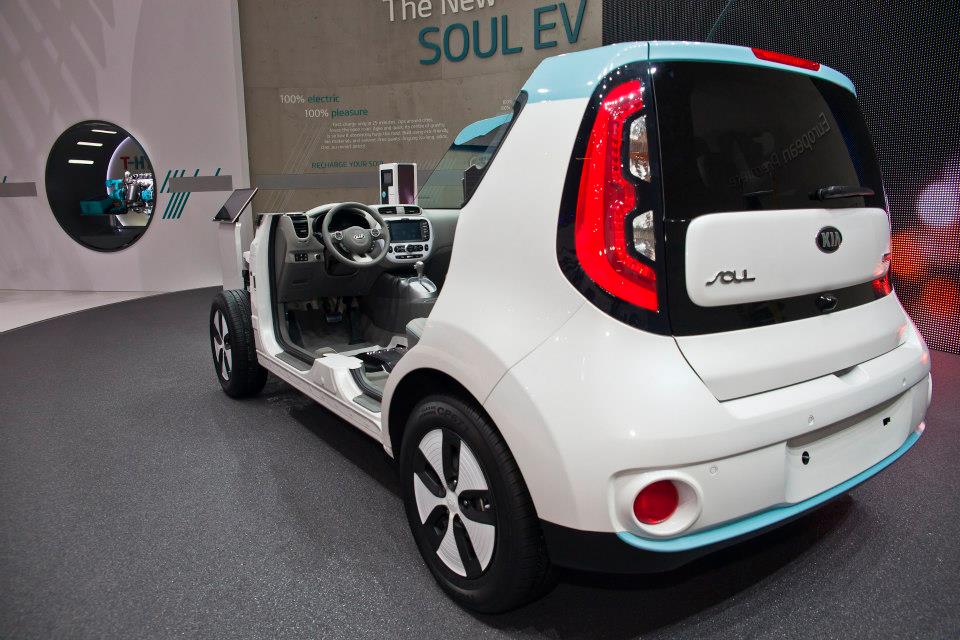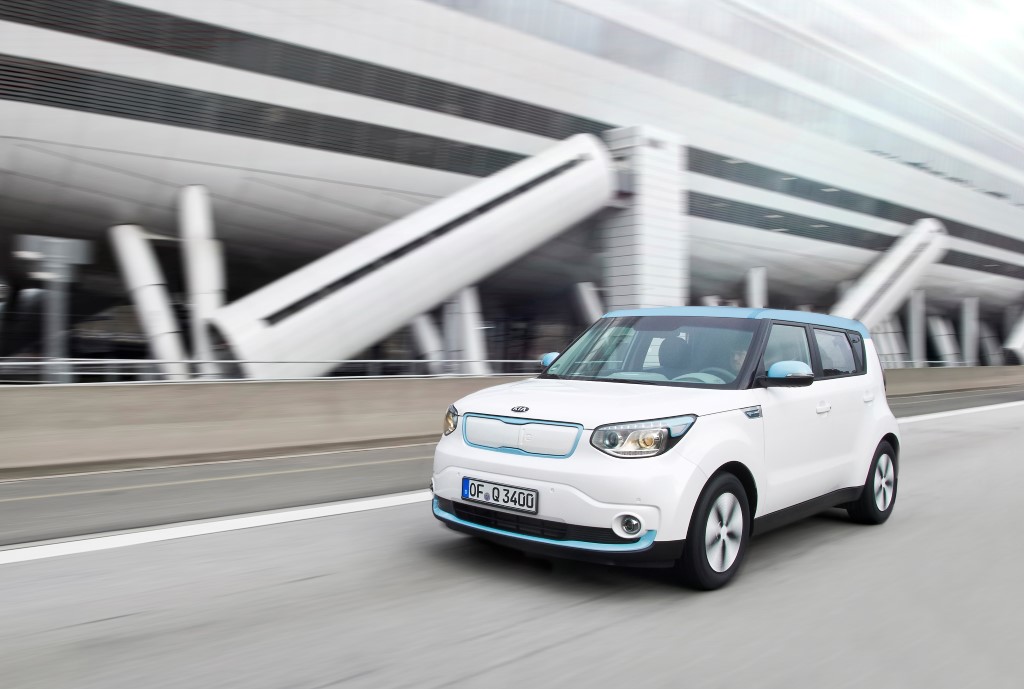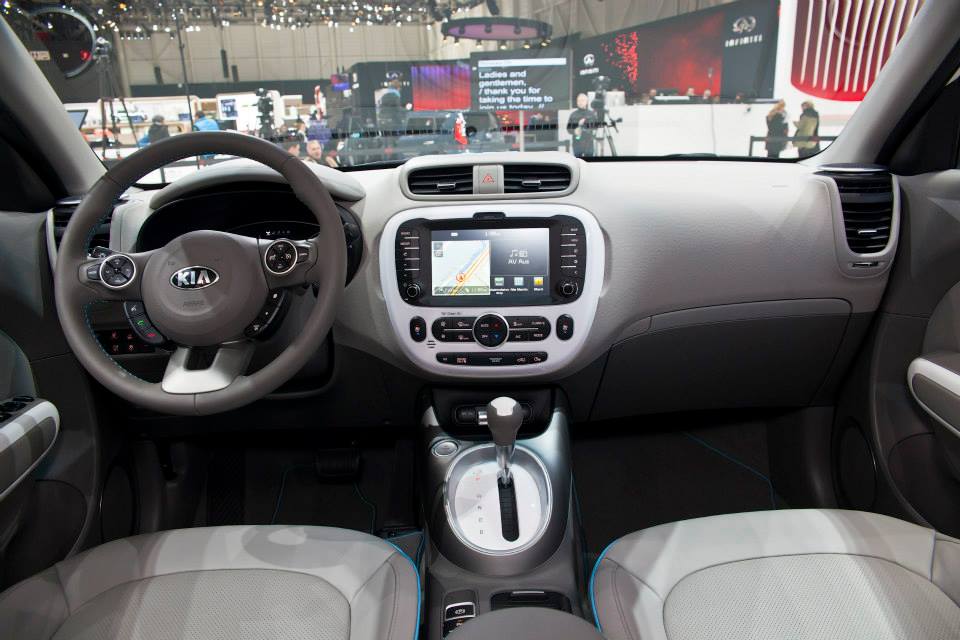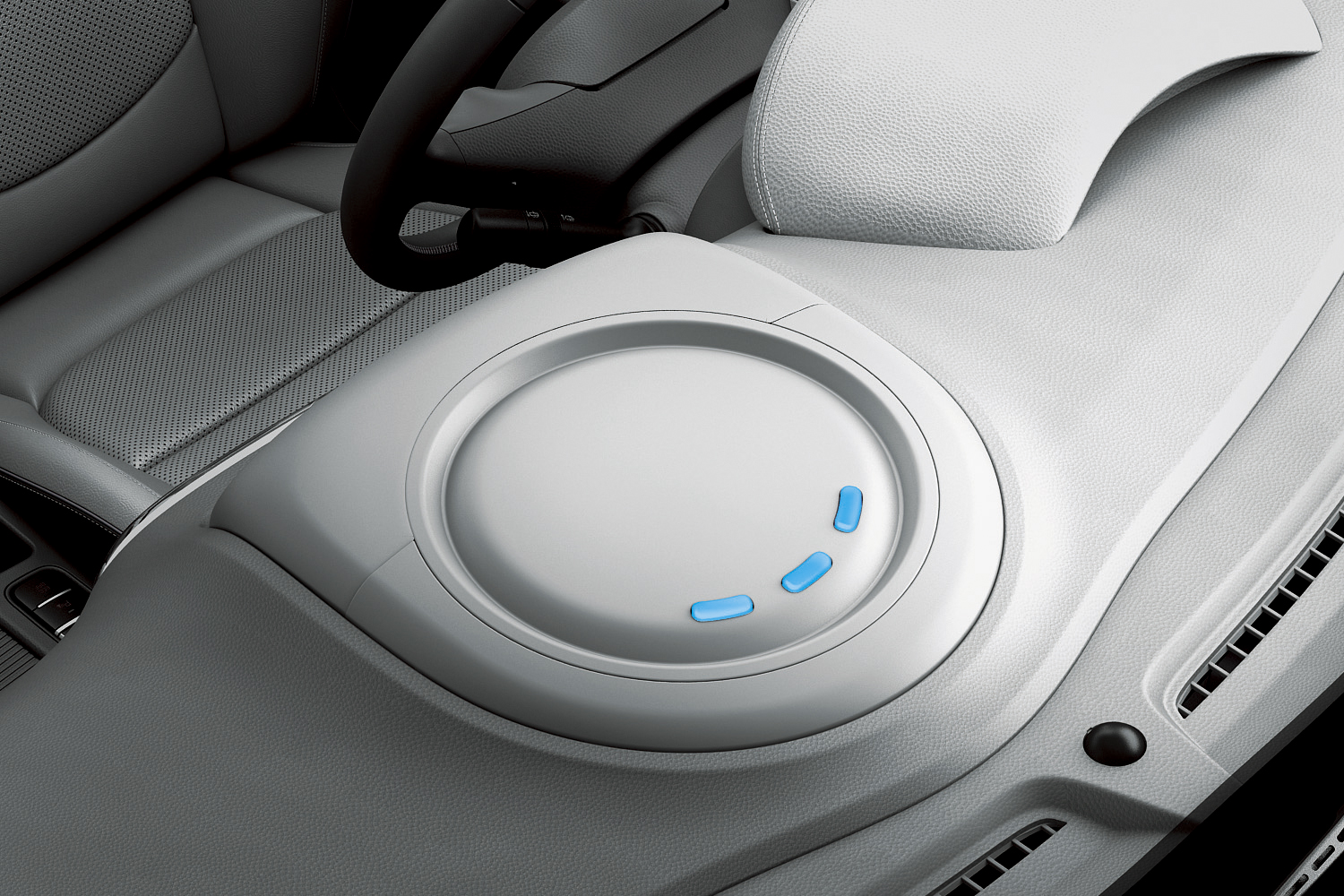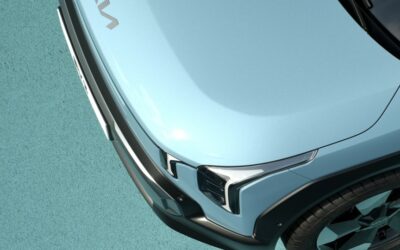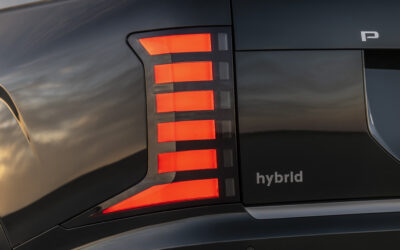The Kia Soul EV today made its European debut at the 84th Salon International de l’Automobile in Geneva. Embodying the iconic design of the recently-launched second-generation Kia Soul, the Soul EV will become the brand’s first globally-sold electric vehicle when production starts in the second half of 2014.
[ads id=”0″ style=”float:left;padding:5px;”]Michael Cole, Chief Operating Officer, Kia Motors Europe, said: “Not only is the Soul EV a stylish, eye-catching car to be seen in, but it will also bring with it the same high quality that buyers expect from the Kia brand. When the car goes on sale across Europe later in the year, the Soul EV will benefit from Kia’s unique 7-Year, 100,000 mile warranty, making it the only electric vehicle available with such a comprehensive warranty.”
“It will be a car for the head and for the heart, and the Soul EV embodies our commitment to offering European customers stylish, environmentally-responsible vehicles with an industry-leading warranty and excellent value for money.”
Iconic design for a modern product
As with the standard internal combustion-powered model, the Soul EV introduces a thoroughly fresh, more grown-up appearance, which makes it instantly recognisable as a Soul. The Soul EV differs itself from the rest of the 2014 Soul range with a two-tone colour scheme with contrasting ‘floating roof’, unique 16-inch alloy wheel design and LED taillights, as well as a new ‘eco electric’ badge on the wing at the base of the A-pillar. The car receives unique front and rear fascias, incorporating a larger front grille and charging ports.
The Soul EV also features a new interior, with higher quality materials and a more driver-focused design. It is the very first Kia model to be fitted with the brand’s new OLED (organic LED) instrument cluster, while the interior’s light two-tone colour scheme gives the cabin an airy, open atmosphere. A double-injection moulded fascia further improves the high quality feel of the soft-touch dashboard.
The Soul’s AVN (audio-visual navigation) system is carried over as standard in the Soul EV, with additional EV-only features for the new model, including scheduled ventilation and charging. A number of new features designed to minimise range anxiety are included as standard, providing the driver with full details on the car’s energy consumption, a charging station search function and a navigation system which displays the vehicle’s total driveable range.
Class-leading battery energy density
The Soul EV is powered by an 81.4 kW electric motor, producing 285 Nm of torque, and a high-capacity 27 kWh lithium-ion polymer battery pack located beneath the cabin. The motor delivers its power to the front wheels through a single speed reduction gear set, allowing the Soul EV to accelerate from 0 to 100 kph (62 mph) in under 12 seconds, going on to a top speed of 145 kph (90 mph). Kia engineers are targeting a driving range of around 200 km (124 miles).
While the efficient packaging of the electric motor and electronic systems meant engineers were able to reduce weight and minimise the intrusion of the battery pack on cabin space, the Soul EV benefits from class-leading 200 Wh/kg battery cell energy density, enabling the battery to store greater amounts of electric energy relative to its weight.
The battery pack, developed jointly over the last three years by Kia Motors and SK Innovation in Korea, has been engineered for greater efficiency, with optimisation of the electrolyte formulation designed to maintain the battery’s performance at high and low temperatures. Low-resistance nickel cobalt manganese cathodes and carbon graphite anodes reduce electric resistance and allow more efficient energy discharge.
The use of lithium-ion polymer batteries (compared to more commonplace lithium-ion batteries) allows for greater energy density, with fewer parts and a simpler cell structure, lower cost production, greater potential for heat management and greater flexibility in terms of packaging.
Building on Kia’s pursuit of greater vehicle crash safety performance, the battery features a ceramic-coated separator within the cell itself to protect the unit, as well as overcharge protection, which monitors electrical current and battery temperature.
To maximise the efficiency and potential range of the Soul EV, regenerative braking captures and recycles the car’s kinetic energy while it is coasting and braking. Users can choose between three regenerative braking modes depending on the amount of braking support and regenerative power required.
Soul EV owners can choose between two different driving modes, ‘Drive’ and ‘Brake’, with the latter producing the most energy recuperation from the regenerative braking system. Each of these driving settings are also available in a special Eco-mode, which extends the Soul EV’s driving range by optimising the performance and energy consumption of the HVAC system and the electric motor.
A battery heating system is also fitted to the Soul EV, designed to insulate and warm up the battery in order to minimise the adverse effects of sub-zero temperatures on battery charge. The 6.6 kW AC on-board charger enables the Soul EV to be fully charged within five hours depending on the local electricity supply. An 80 per cent charge can be achieved in as little as 25 minutes with a 100 kW DC charger (33 minutes at 50 kW).
New HVAC efficiency technologies
Early on in the development of the Soul EV, Kia engineers identified the need to dramatically reduce energy consumption of the HVAC systems. In the worst case scenario, the maximum use of HVAC under extreme cold conditions could potentially reduce an electric vehicle’s effective range by up to 50 per cent.
To address this challenge, Kia engineers implemented four new HVAC technologies designed to reduce energy usage in the Soul EV – a highly efficient new heat pump, smart air intake control, individual ventilation (for driver only) and scheduled ventilation.
The new heat pump utilises waste heat from the air-conditioning and electrical systems to improve the energy efficiency of the heating and ventilation system and improve the car’s ability to efficiently heat up the cabin, thus minimising electricity consumption from the battery.
This system, made up of a compressor, evaporator and condenser, allows the Soul EV’s heating and ventilation system to harness the waste heat given off by electrical components. Instead of relying entirely on the electricity from the battery to heat the cabin to the driver’s desired temperature, the heat pump recycles heat energy emitted by the electronics to increase the efficiency of the heating and ventilation systems.
By reducing the load on the battery, the heat pump cuts energy consumption by the heating system and increases the overall driving range of the Soul EV. Working in conjunction with the heat pump, the Soul EV is also fitted with a new smart air intake control system, which monitors and controls the amount of air entering and exiting the vehicle, as well as the humidity level in the cabin.
Air intake control recycles the air that has already been heated or cooled by the HVAC system, then carefully introduces the optimum amount of fresh air to the cabin. By better controlling the air flow inside the vehicle, the HVAC system is able to cool or heat the cabin more efficiently and minimise the use of the heating or air-conditioning during a drive. The system relies on a humidity sensor, temperature control and an intake actuator to monitor and control the in-flow of fresh air to the cabin.
The Soul EV is fitted with a new individual ventilation system – the first time such technology has been introduced to any production vehicle. This reduces energy consumption by only providing ventilation and heating to the driver, completely shutting off heating and ventilation to the foot-well and dashboard ventilation on the passenger side. This is in contrast to existing vehicles on the road, in which closing the vents merely diverts hot or cold air through other vents in the car while energy consumption remains the same.
The individual ventilation system, activated using the ‘driver only’ button on the dashboard, minimises HVAC energy use to provide a comfortable driver-side temperature when driving alone, resulting in a more efficient heating system and greater driving range.
A first in a Kia vehicle, the Soul EV is equipped with a new pre-conditioning or scheduled ventilation system. Accessing the car’s heating system through the car’s HMI interface, users can schedule their vehicle to pre-heat or pre-cool the cabin 30 minutes before they start the car. The system works while the car is plugged in and reduces load on the battery when the Soul EV starts running. Instead, the cabin is cooled or heated using power from the grid, ensuring the vehicle is already at the driver’s preferred temperature before departure.
[ads id=”2″ style=”float:left;padding:5px;”]
[ads id=”2″ style=”float:left;padding:5px;”]
Efficient EV packaging
While almost the entire upper body structure is carried over from the standard internal combustion-powered 2014 Soul, a number of improvements have been introduced to the Soul EV to further improve bodyshell stiffness and ensure that minimal intrusion on the cabin space results from the mounting of the battery pack.
Principal among these changes is the addition of five cross-members, bolted below the vehicle body for battery support and increased torsional rigidity. A higher proportion of ultra-high tensile steel is also adopted for the Soul EV (up from 35.0 per cent of the body to 37.1), with the application of the steel further strengthening the B-pillar and sills. The Soul EV therefore benefits from a 27 per cent improvement in torsional rigidity compared with the standard vehicle (itself 29 per cent stiffer than the first-generation Soul).
One of the key aims of Kia’s engineers in the development of the vehicle was to ensure that the addition of the battery pack under the cabin had a minimal effect on the Soul’s generous interior space. As a result, rear passenger legroom is reduced by just 80 mm, though this reduction is countered by changes to the rear seat cushion, which raises passengers’ knees and gives them more space. The undertray storage in the boot of the standard car now holds the vehicle’s charging cable. Like the standard car, motorists can find the car’s tyre mobility kit stored beneath the undertray.
Overall, the Soul EV suffers minimal battery intrusion compared to competitors. The exterior dimensions of the Soul EV are identical to those of the gasoline and diesel-powered versions of the car.
Improved ride and handling for comfortable urban driving
The Soul EV has been engineered to provide stable handling characteristics and a comfortable ride in urban environments, and with a stiffer bodyshell than the standard Soul, Kia engineers have been able to improve ride comfort of the electric model.
The battery’s location – beneath the floor of the cabin – has resulted in a lower centre of gravity and a greater feeling of stability, which helps ride and handling and ensures that the Soul EV remains true to the Soul’s fun-to-drive reputation.
Noise, vibration and harshness (NVH) characteristics are also improved in the Soul EV. With the absence of gasoline or diesel engine noise, and less whine from the electric motor than in rival vehicles, Kia’s goal was to significantly reduce mechanical buzz, road roar and wind noise to maximise the vehicle’s refinement.
Increased dampening in the suspension, as well as 15 per cent stiffer alloy wheels, delivered a reduction in vibration, while a battery cover along the floor of the vehicle has been added to improve aerodynamic performance and reduce wind rush. Greater use of bio-friendly soundproofing material – particularly in the dashboard, under the bonnet and at the base of the windscreen – has also improved NVH.
Finally, the Soul EV is fitted with super-low rolling resistance tyres. Designed by Kumho and Nexen specifically for the Soul EV, the new 205/60R16 tyres – made up of a low resistance compound and tyre profile – reduce rolling resistance by 10 per cent, crucially without impacting on ride comfort, handling, NVH or braking distance.

